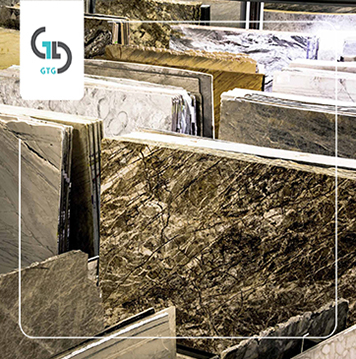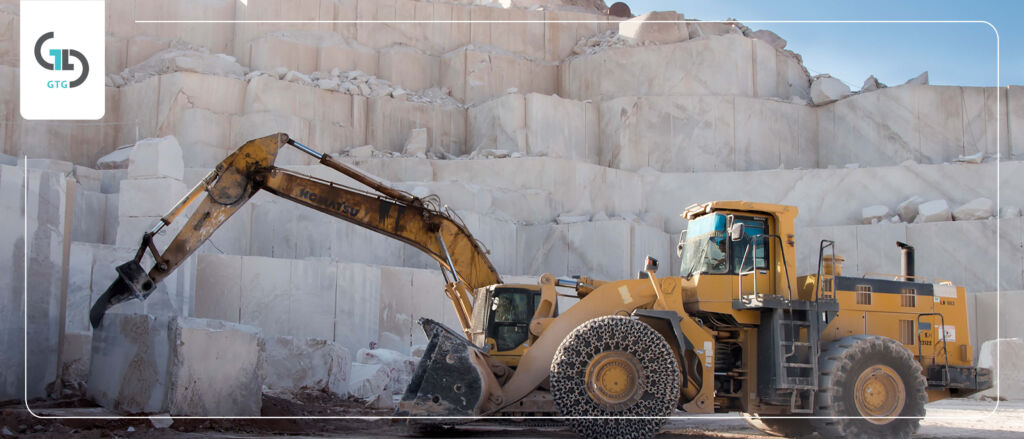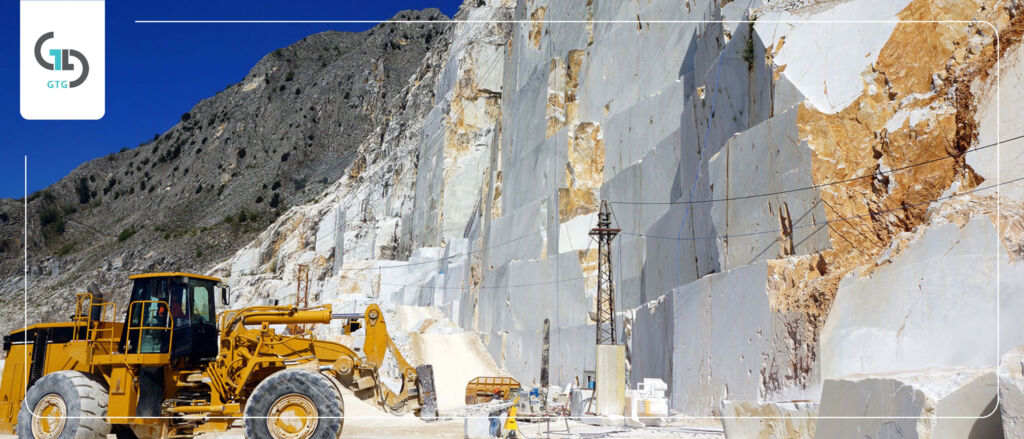
Numerous nations import Iranian stone. Market activity for this sector is seen in nations like China and the United Arab Emirates. Additionally, stone from Iran is sent to Europe. Iranian stone importers are European countries such as Italy, Germany, England, France, Belgium, and Poland as well as South America, Australia, and Japan. In this paper, Iranian stone exports will be investigated.
Iran’s position in building stone
Iran is the ninth nation having mines for building stone. Also, it is where about 80% of all building stones are found and extracted.
The quality of many Iranian building stones is among the best in the world. Iranian stones are recognized around the world thanks to their export.
The majority of Iran’s stone mines, including those producing Hajiabad stone and Dehbid marble, are found in the cities of Isfahan, Kermanshah, Mahalat, and Qom. The quality and color of Dehbid marble are well-known around the world. Although they might not be well-known worldwide, our other stones may nonetheless be of exceptional quality. This demonstrates the importance of branding and marketing in the export of stones.

The advantages and problems of stone export
Every spectator is drawn in by the stone’s variety of patterns, hues, and lines. There are mines in Iran that produce unique stones like white, blue, smoke marble, etc. that are said to have high investment potential. Stone exports to Asian, East Asian, and European nations are quite successful. Iranian customs barriers and export administrative processes are two problems that impact the export of stones. It is preferable to speak with consultants and experienced professionals in this area to resolve these issues. The professionals at GTG Trading Company are prepared to offer any assistance and handle any business concerns.
Stages of Iranian stone export
Pay close attention to the following measures before entering the stone export industry:
Indicate why you are exporting this product. After that, you may decide on your exporting tactics. You could use a different approach when exporting stone to Iraq than when exporting it to India.
Understand the dangers of exporting to avoid getting caught in the act.
Before exporting to another country, locate your buyer.
Prepare your goods, then package them, after locating the client and creating the contracts and memorandums. Keep in mind that the stone is one of the breakable items and that it has to be carefully packed to prevent damage while being transported.
Make sure you have a rough idea of your costs. Continue exporting stones to different nations after tallying your earnings and outgoings to determine your profit and loss.
Type of stones
Marble, travertine, granite, and other stone types are divided into several groups. The grade of marble is superior to that of other kinds of stone. Each of these stones has a specific application in the building sector. The stones are moved by land and water due to the weight of the burden.
Types of export stones
There are two methods for exporting stone: cut (slab and tile) and uncut (syncope). Syncope-type stone is sold to well-known stone-producing nations including Italy, Turkey, and China. Then, it is cut in the country of destination, and the increased value that results helps those nations. Due to raw sales and no additional value, syncope stone exports are taxed. Cut stones or slabs are frequently sold to nearby nations including Iraq, Afghanistan, and those in the Persian Gulf. The total value of stone field transactions worldwide is over 2.5 billion dollars, with Turkey accounting for the maximum portion of 950 million dollars. Syncope used to be sent from Iran to the target countries and then imported back into Iran after being made into slabs and tiles. As a result, imports of stone tiles and slabs into Iran were eventually prohibited.
Slab stone, which can accommodate 5 or 6 pallets in one 20-foot container, is loaded on a pallet because of its bigger size and is packed in a 20-foot container along with syncope. Slab stone must be placed in the container with extreme accuracy due to its big size and great sensitivity. Tile stone is loaded into 20-foot and 40-foot containers and is packed in a wooden box due to its smaller size.
China, India, and Italy are the top destinations for stone exports, followed by the United Arab Emirates, Iraq, Turkey, Kuwait, Malaysia, and Oman. The most common type of stone exported from Iran is marble. The following categories include mineral stones, travertine, crystal, and porcelain. Typically, rows 2515 and 2516 include the stone export tariff code. Due to qualities like polishability and great resistance to moisture, cold, and heat, building stones are frequently employed.
Within the nation, there is a yearly demand for 8 million to 12 million tons of construction stones. Around 7 million tons of stone, or $150,314,000, are required for export to other nations. While this is going on, our stone plants have a 25 million-ton annual production capability.
The existence of sanctions and barriers to Iran’s financial dealings with other nations are two factors in the limited number of stone exports from Iran. The quality of the stone produced by Iran’s stone manufacturers is similar to the standards and quality demanded by the European markets, but there are not many merchants qualified to operate and market properly abroad.

High-quality Russian market
Russia is one of the stone export markets. As a result of its favorable commercial connections with Iran and its disagreements with Ukraine and Turkey, Russia is a particularly lucrative market for Iran’s stone exports. 142 million people are living in Russia, and because of its environment, stone is frequently employed in the building.
Stone export to Turkey
Different types of stones are exported to Turkey. However, among the several types of stones, the export of marble, white marble, terracotta, marble, and granite stones is crucial. Turkish buyers can be drawn in by using useful proportions and suitable thicknesses.
Granite is exported to Turkey because of its resistance and long lifespan. The mineral from which the stone is cut, the stone’s size, and the stone’s thickness all affect the price of the stone. The stones are processed as single, two, three, or broken stones for export to other nations, where they undergo additional processing before being used.
Furthermore, these stones may be cut at Iranian facilities and exported as sheets for use in the building sector.
The most key construction stone mines of Iran
Iran ranks eighth in the world with 4.7 billion tons of construction stone deposits, out of an estimated 15 billion tons worldwide.
The top five building stone deposits in Iran are composed of 44% marble, 25% porcelain stone, 20% granite, 10% travertine, and around 2% marble.
Isfahan province, which has the broadest selection of stones, is where most of Iran’s stone industry takes place. The following ranks include Central Province, West and East Azerbaijan, Yazd, Zanjan, Qazvin, and Hamedan.
Conclusion
Iran can take advantage of the burgeoning stone export markets thanks to its extensive mines, accessible location, and easy access to open waterways. Ask our professionals at GTG for guidance.
